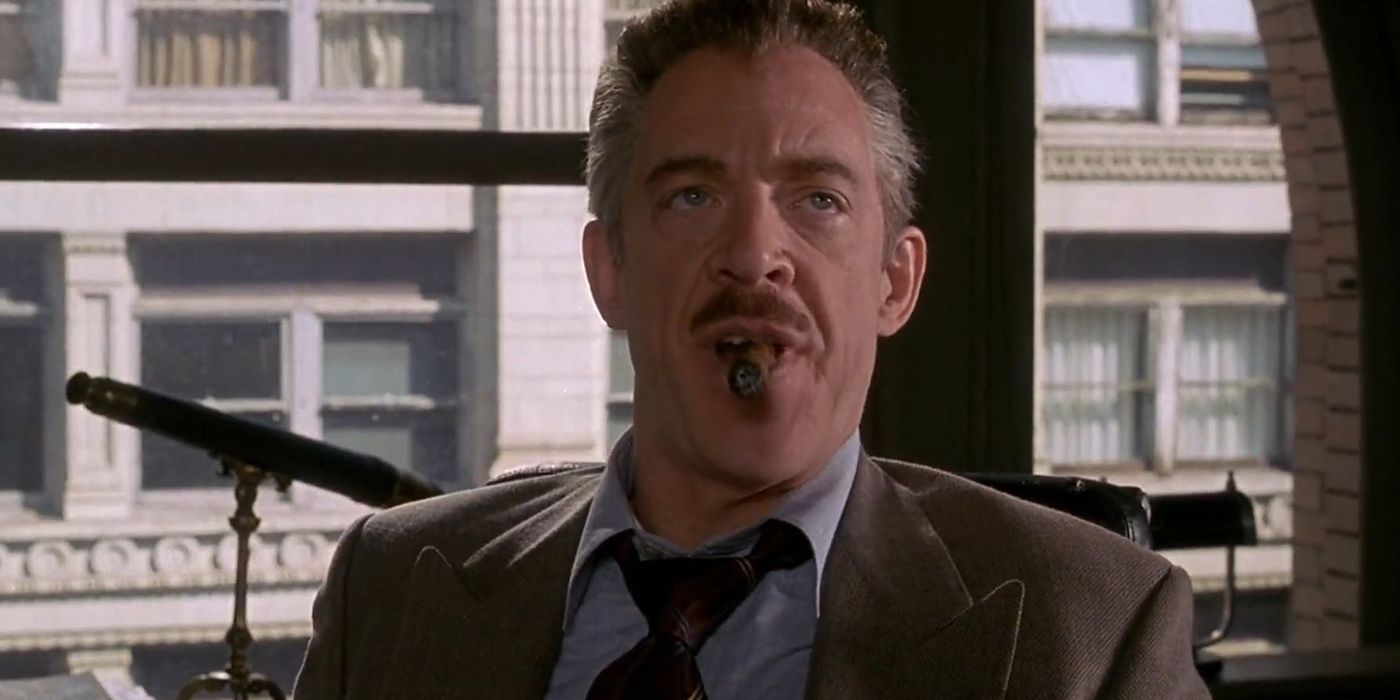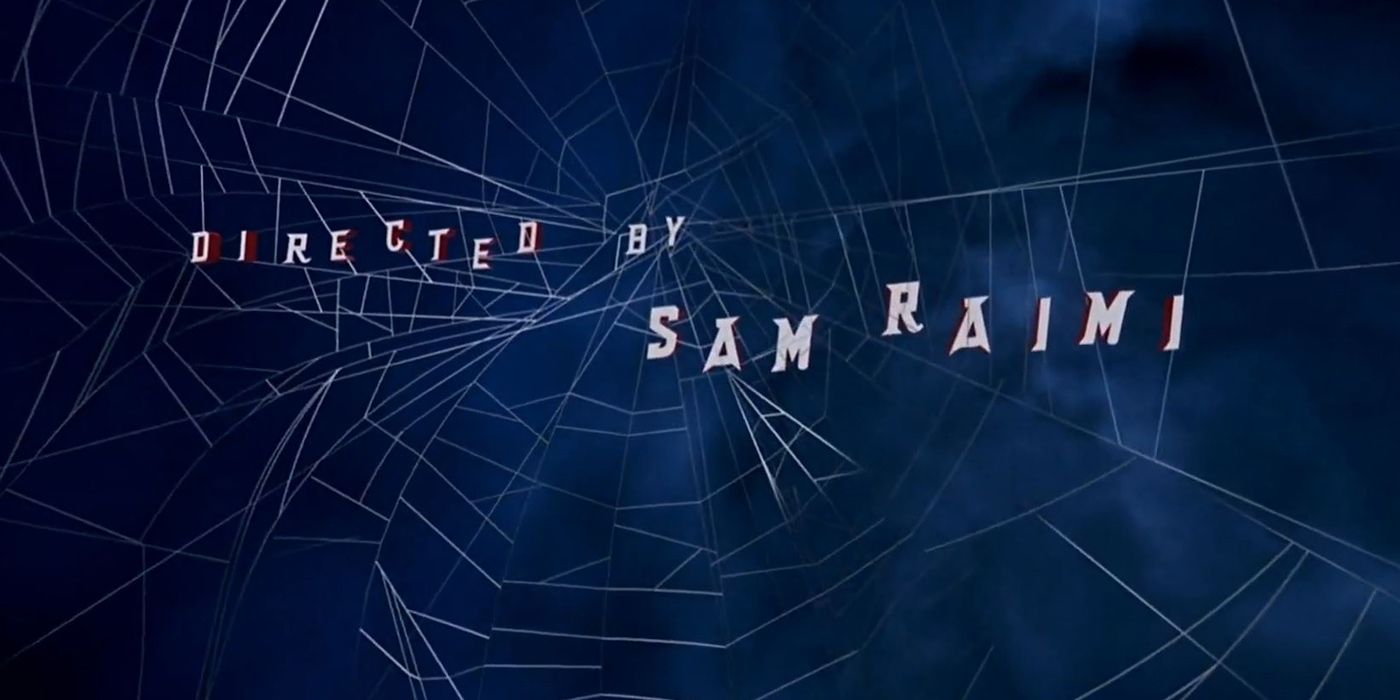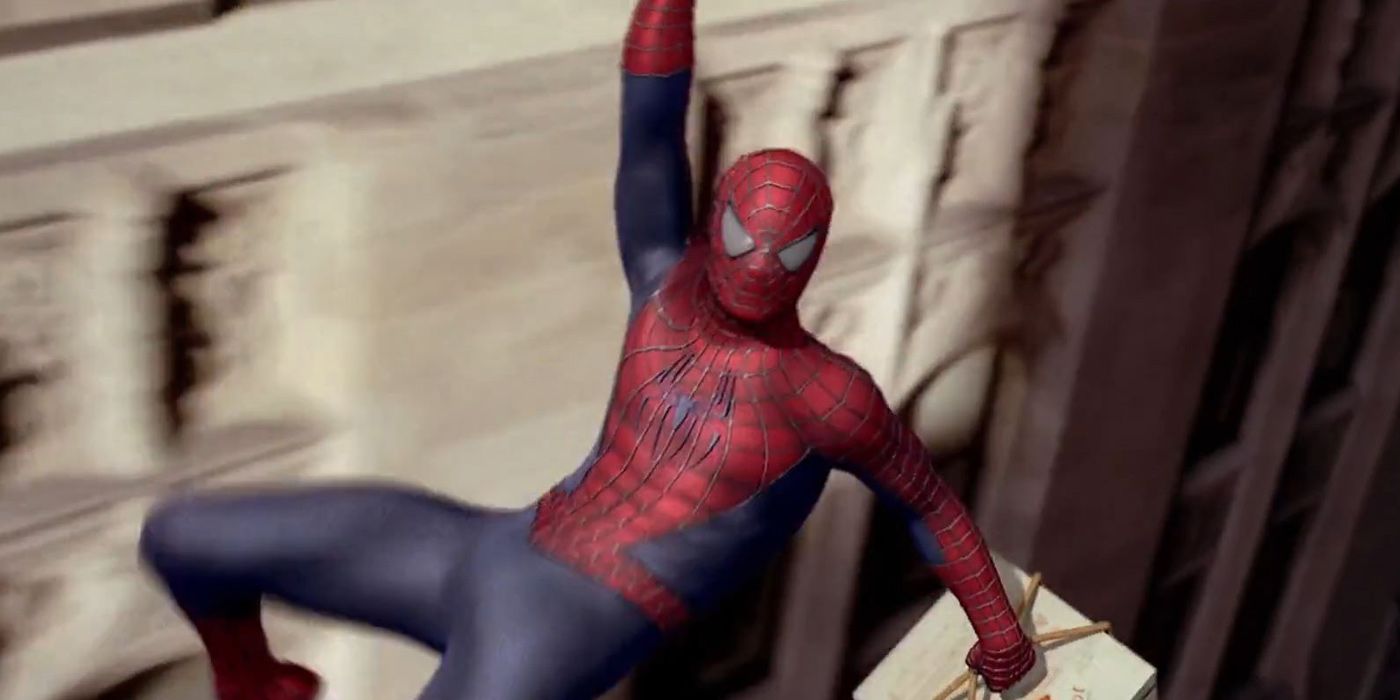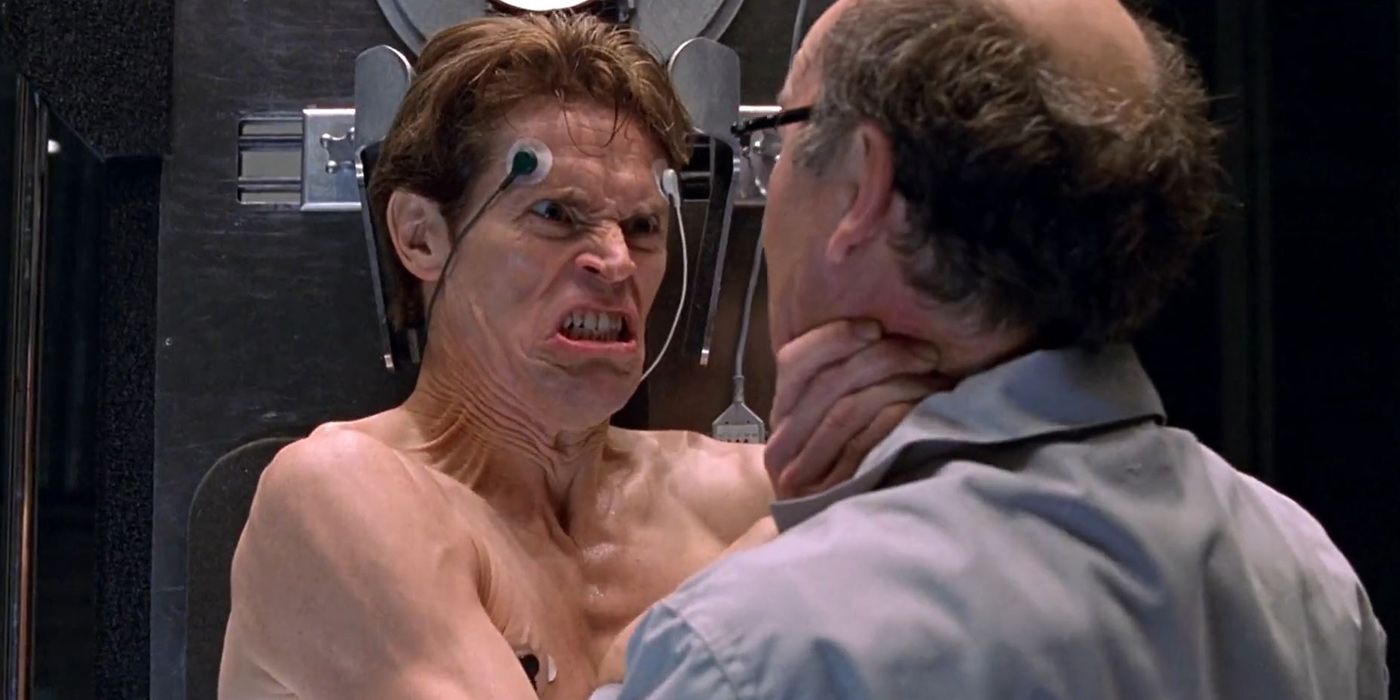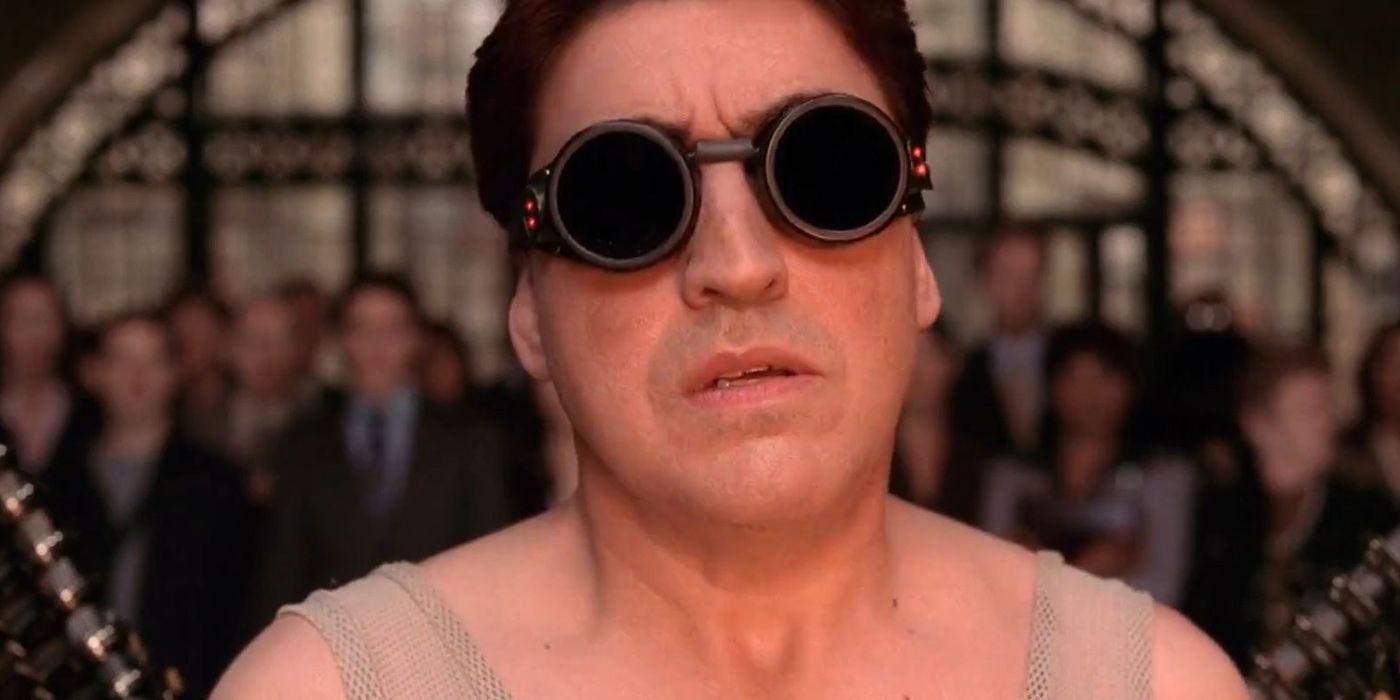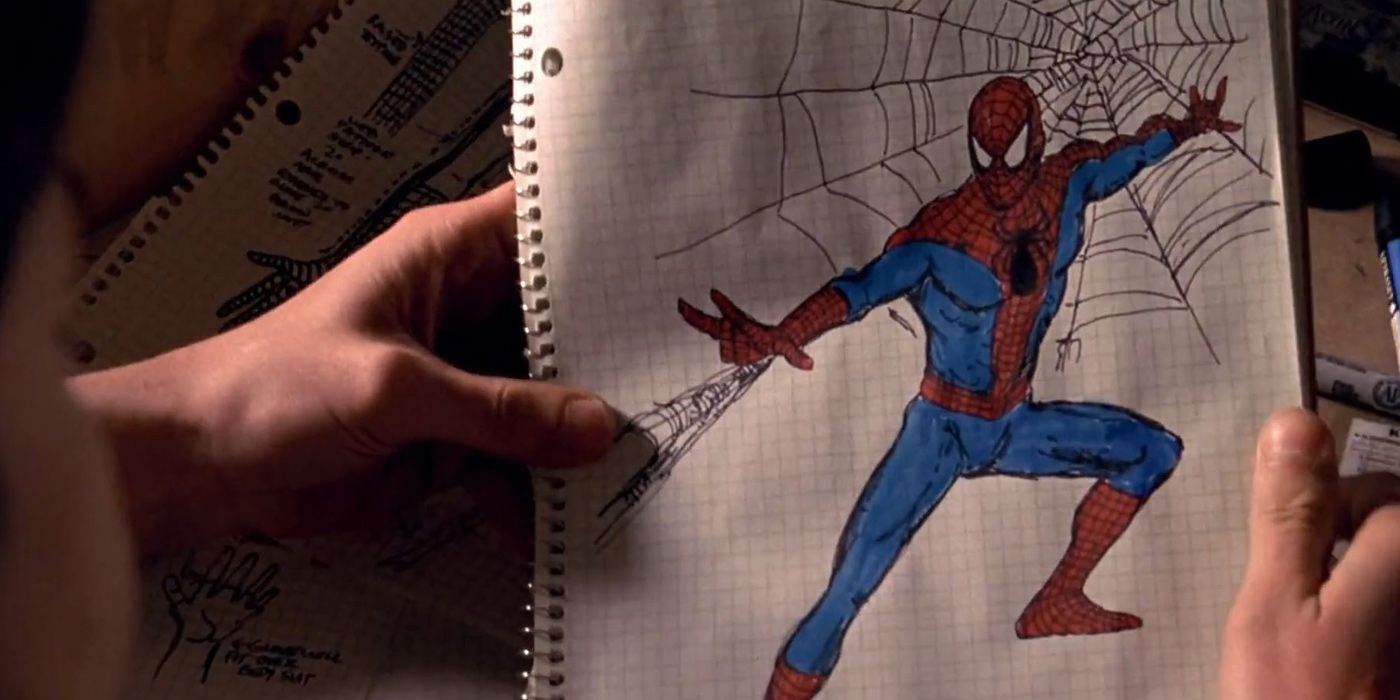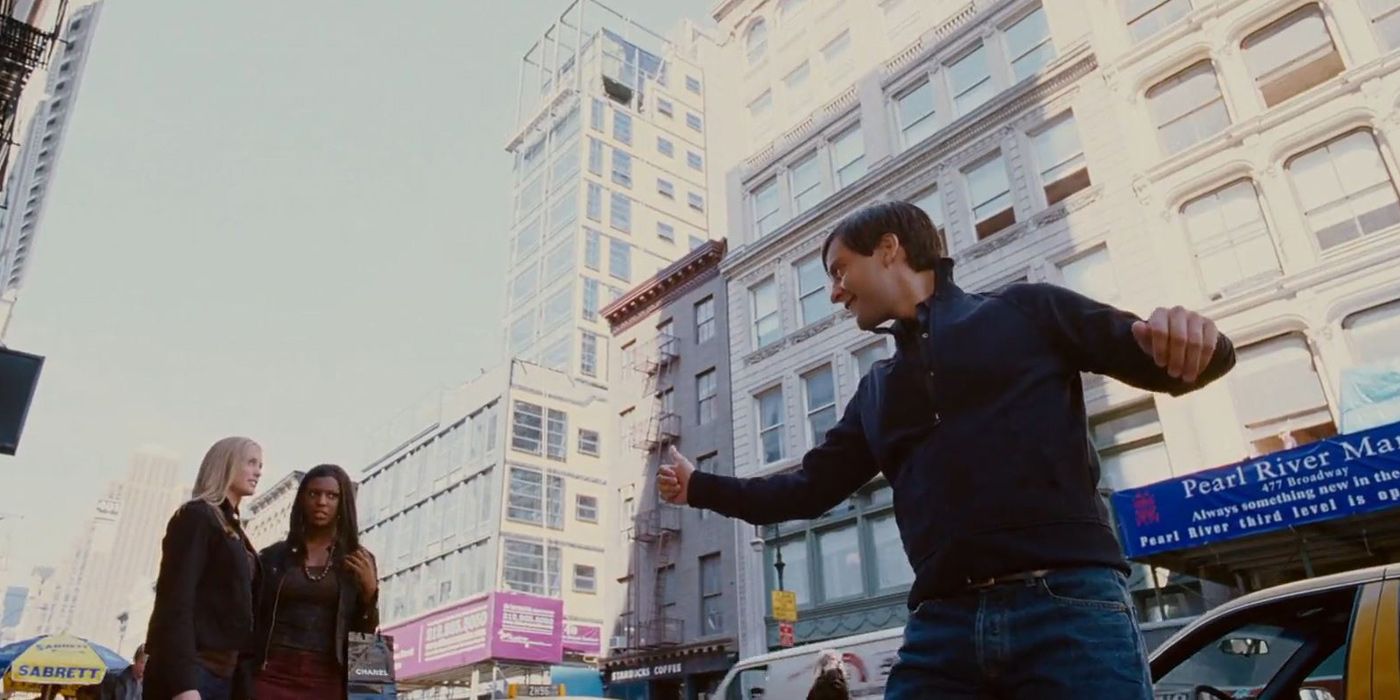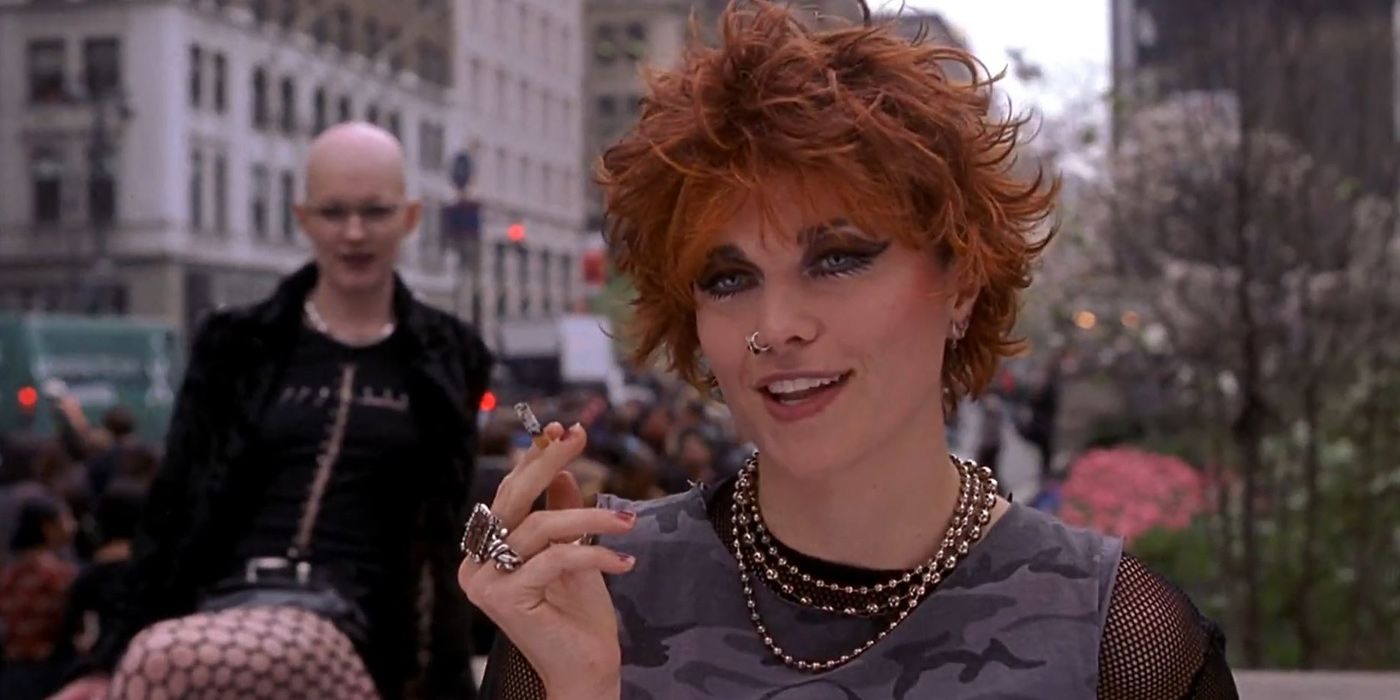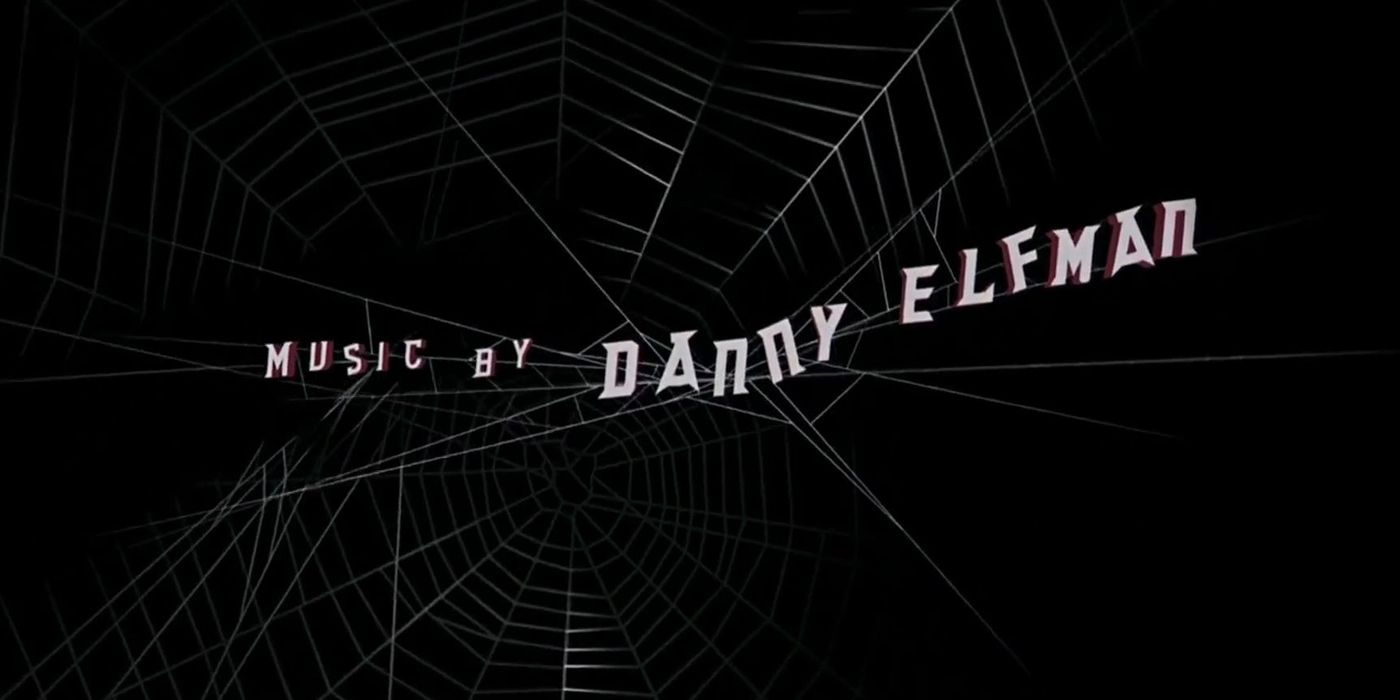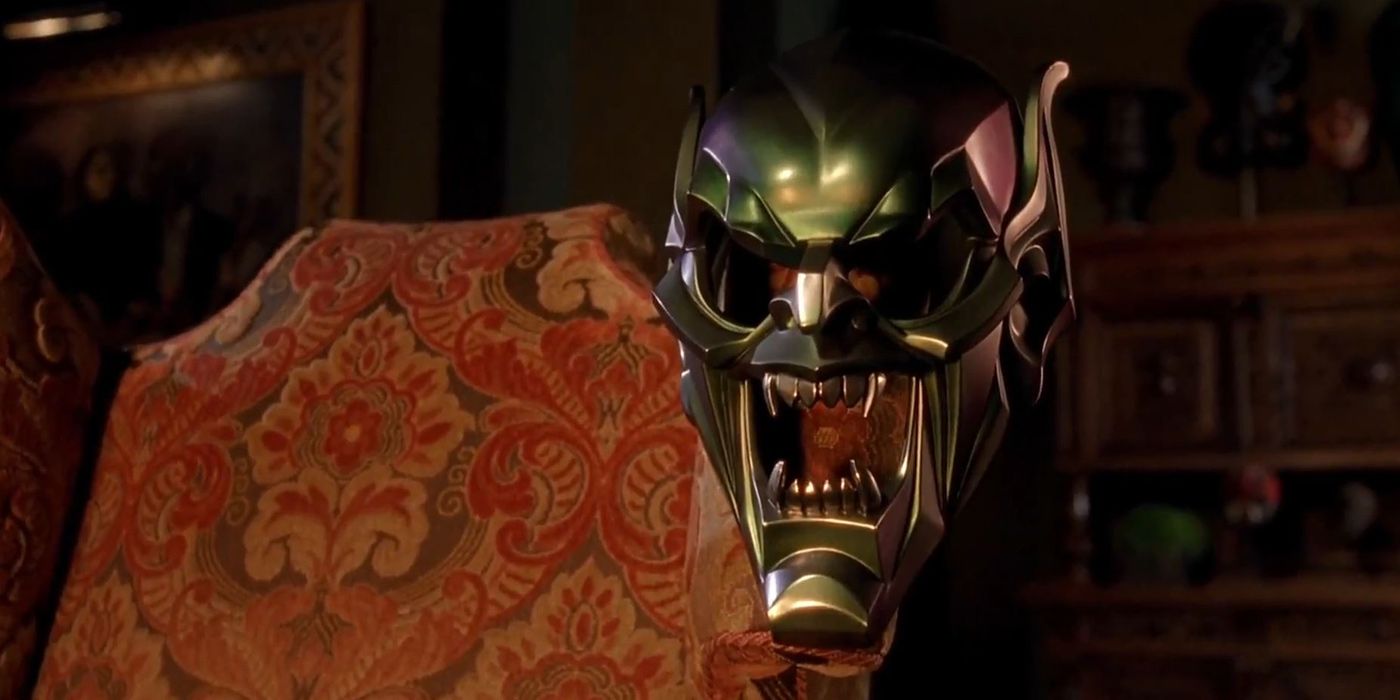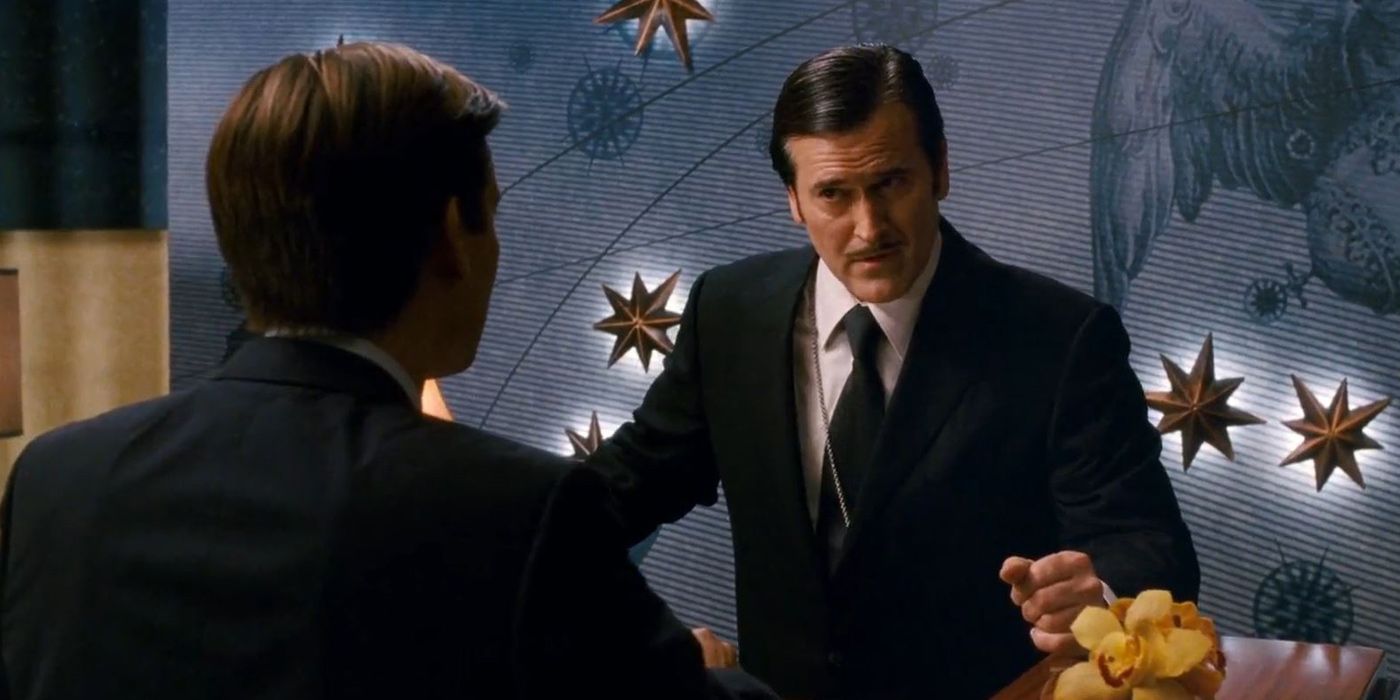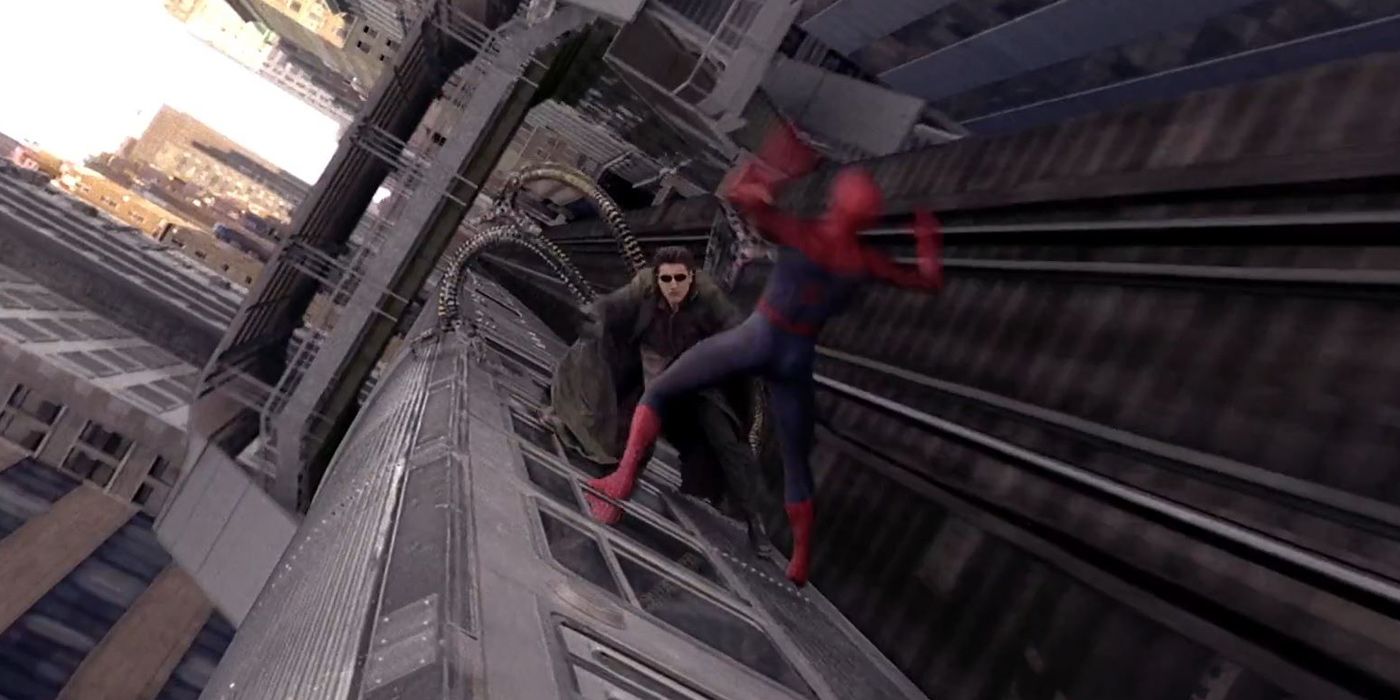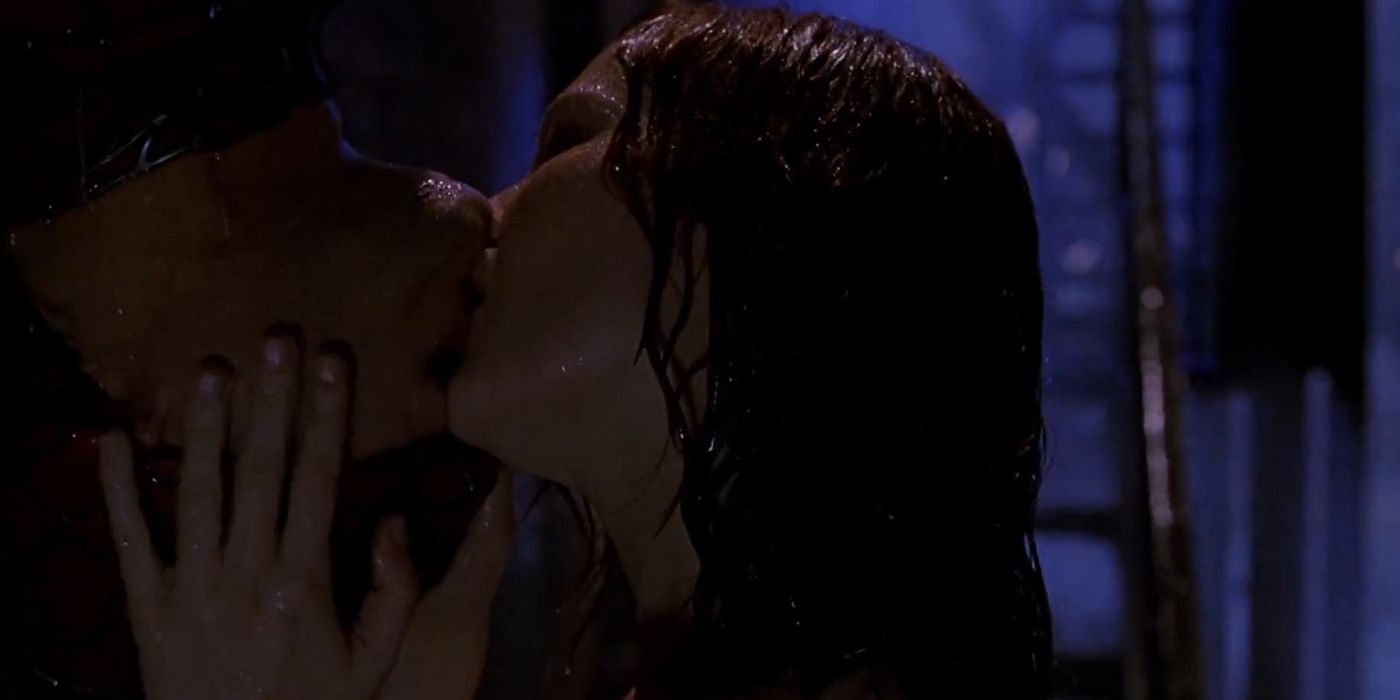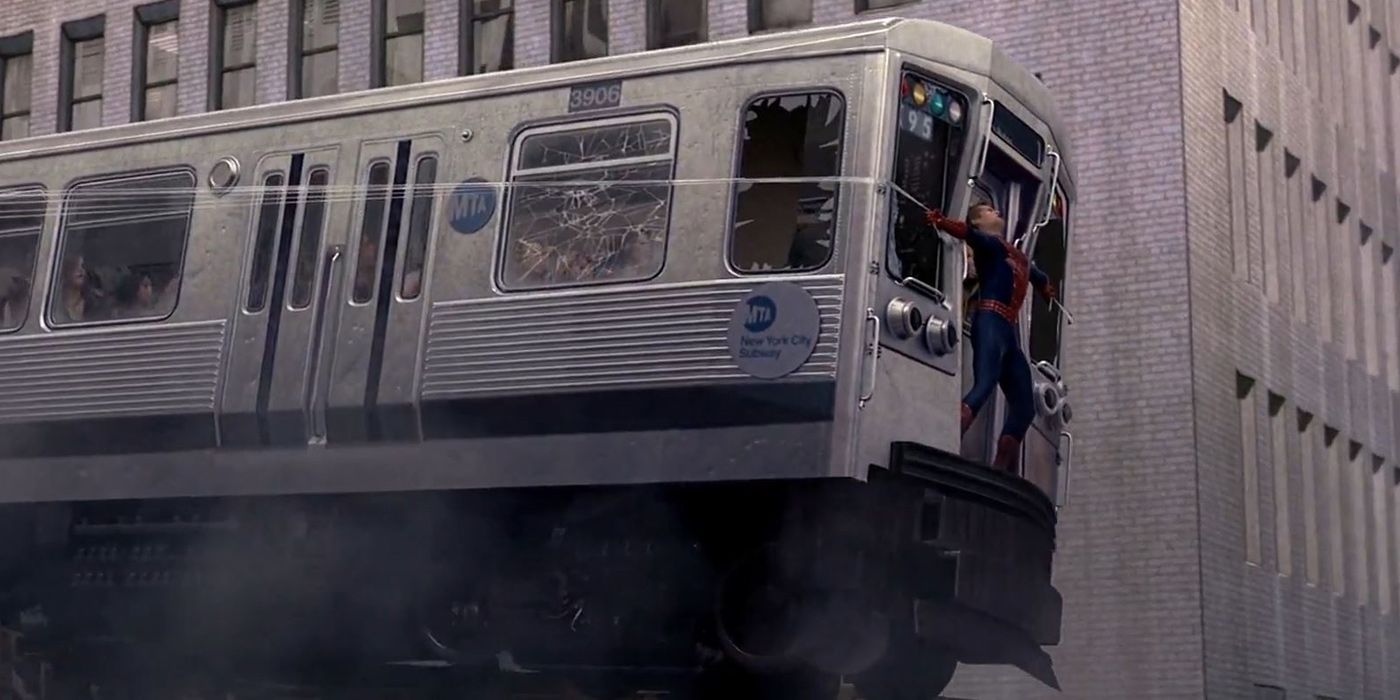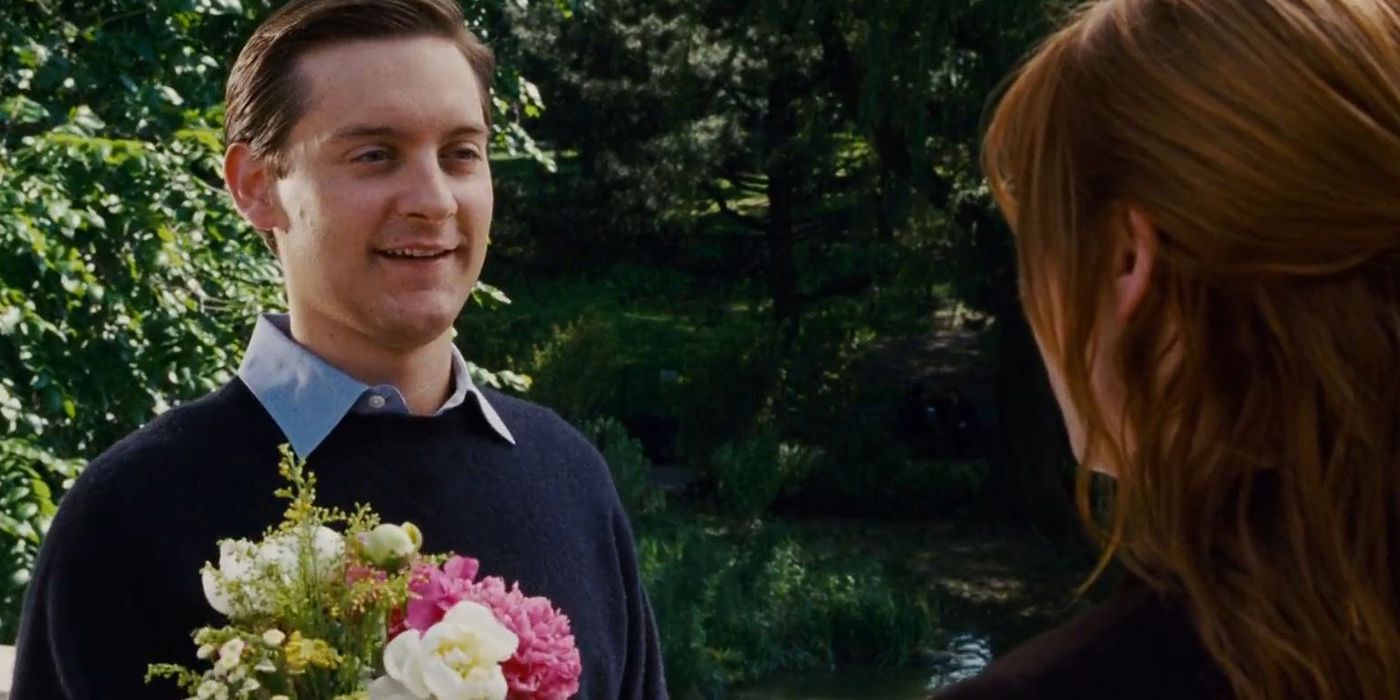We used to live in simpler times. With Spider-Man: Homecoming hitting the big screen on July 7, 2017, the conversation of 'Who is the better Spider-Man?' has deepened. Actually, maybe it's never been a simple topic since the comic books have seen clones, body-swapping, Spider-men from the future, from parallel universes, and now a whole Spider Family. But in regards to the cinematic versions of Spider-Man, fans have debated between Tobey Maguire and Andrew Garfield, and now we have Tom Holland to think about, too.
Now that we have our second reboot coming soon, it's important to take a look back and remember where we came from. Sam Raimi's Spider-Man trilogy, beginning with Spider-Man (2002), set a lot of milestones for the superhero movies we see today. This list will be focusing on what Sam Raimi got right, which means the underappreciated decisions he made that not only made a great superhero movie, but an amazing Spider-Man story, and will be less-focused on the artistic liberties that deviate from its comic book origins (like those pesky organic webshooters). Here are 15 Things Sam Raimi's Spider-Man Trilogy Got Right!
15. Relaunching the 'Superhero Movie' Franchise
The Marvel Cinematic Universe is now fully into its 'Phase Three' with 3-4 releases a year, but there was a time when a superhero movie was a box office gamble. Unless 'Batman' or 'Superman' was in the title, studios were wary to invest in it. A Spider-Man movie had been in development for 25 years, changing hands many times due to rewrites, financing and legal rights, until ultimately landing with Columbia Pictures (Sony) and Sam Raimi.
But Spider-Man (2002) became the first film to beat the $100 million mark in a single weekend, and was the highest-grossing film of 2002 in the U.S. and Canada. This box office reception (which continued to gain momentum for Spider-Man 2 and Spider-Man 3), combined with positive reviews praising Raimi's storytelling, action scenes, and heart, helped pave the way for the trilogy's success. Not to mention the star power of established and up-and-coming actors alike. Tobey Maguire, Kirsten Dunst, and James Franco would all end up making their mark. This was a time before Nolan's Dark Knight trilogy, the three Iron Man movies, subsequent Thor and Captain America movies, and all the MCU movies to come. Not bad for a nerdy kid from Queens, right?
14. J.K. Simmons as J. Jonah Jameson
This is the only casting decision given it's own place in this list, as there is not a more perfect casting than J.K. Simmons as J. Jonah Jameson. The reality is, it's just hard to imagine anyone else other than Simmons playing the Daily Bugle editor. It's also hard to ignore the void created by his absence in The Amazing Spider-Man movies, as his character was a constant source of criticism and comedy in Raimi's films. Other than reprising his role as Jameson with voicework for video games and animated releases, Simmons has been very busy since the Spider-Man films. Most notably for his performance in Whiplash where he played Terence Fletcher, an abusive conductor for a jazz ensemble, and won countless awards, including a Golden Globe Award and Academy Award for Best Supporting Actor. He is also set to play Commissioner Gordon in the Justice League movie coming out later this year.
So is he too big a star to ever come back to the Spider-verse? Not at all! Simmons has expressed interest in the past in reprising his role as Jameson, despite the logistics of bringing either a different version or the exact same version of the character to the MCU reboot.
13. Villain Transformation Scenes
When the news got out that Spider-Man would enter the MCU without yet another origin story, fans were relieved. After all, how man times does Uncle Ben have to die? One accomplishment often overlooked is how Sam Raimi not only had the perfect origin for Spider-Man, but continued to introduce his enemies in chilling, dramatic, and memorable scenes. With Spider-Man getting the Gregor Samsa treatment, each new villain would have to be created in a manner that surpassed his perilous transformation. Green Goblin saw Norman Osborne sacrifice himself as the human test subject in order to save his company, full of eyes-rolled-back seizing and that goofy grin and cackle that no one but Willem Dafoe could pull off. Doc Ock had a brilliant origin scene where he awakes in an operation room, surrounded by the murdered surgeons killed by his sentient artificial appendages. Flint Marko's transformation into the Sandman is one of the most beautifully depicted villain transformations, devoid of violence and malevolence - he's simply in the wrong place at the wrong time. We'll leave out any mention of the much-debated Venom origin, as it may be best for later list on Things Sam Raimi's Spider-Man Trilogy Got Wrong...
12. The Tragic and Complex Villain
The MCU has a shallow villain problem, often criticized for just having bizarro (mirror-image) versions of their heroes. All the hype for a big bad has also left villains alien and un-relatable, which is one reason Sam Raimi's villains in Spider-Man are so great. There is always a connection, a duality, between the villain and Peter Parker, and the villain and Spider-Man. The villains are dynamic, changing in their roles and motives, and have only turned to crime due to tragic circumstances. And they follow an arc, finding a personal resolution in the end. Their faults are relatable. Norman Osborne put his work first, Otto Octavious, his science. Flint Marko, his sick daughter. Eddie Brock, his jealousy. Harry, his vengeance. All of these are human flaws and not criminal in nature, but we can see how tragedy slowly consumes each one of them and turns them into something they no longer recognize. Did we feel the same way when Malekith lost everything? Ronan? Ultron? Not even close.
11. The Suit!
It would be impossible to win the fans over if they got the suit wrong! It's even more challenging to make a masked character interesting and expressive on screen. The costume designer for Spider-Man, James Acheson, worked over numerous designs before settling on the skin-tight mostly one-piece version you see today. He decidedly made the eyes mirrored, and the webbing machined by a computer to give it more texture and complexity. The combination of a real-life suit and a CGI suit would be a staple of superhero movies to come, with success looking like Robert Downey Jr. never having to go to wardrobe on set, and it's failure seen in Ryan Reynolds as The Green Lantern, with a poorly CGI'd suit. Making the Venom suit just a black version of the Spidey-suit not only saw some negative reviews, but posed the challenge of filming black-garbed characters at night. If only we could have a successful Fantastic Four franchise brought to the MCU to explain away all the marvelous properties of these superhero suits using unstable molecules (especially Hulk pants!).
10. The Comic Book Camp and Humor
With no other proof necessary other than Army of Darkness, it's clear to see that Raimi is the camp king. He brings that B-Horror-influenced comedy with a delicate touch and an excellent execution. What better medium than a comic book movie? Whether it is with Spider-Man or Peter Parker, these moments can be hilarious, endearing, or completely cringe-worthy (Symbiote Peter Parker finger-guns anyone?). Carefully crafted, these pinches of lighthearted and self-aware moments of comedy do an extraordinary job with the overall pacing and tone of the movie, always bringing us back to earth when the action gets crazy or giving us a laugh when Parker's peril in his personal life gets 'too real.'
The physicality of the camp and humor isn't overly done either, and is injected with small actions or inaction. And the timing is everything. Part-slapstick, part-Beckett play, the absurdity of Raimi's humor can be seen in the opening of Spider-Man 2's pizza delivery scene. All those brooms!
9. The Cameos
Nowadays, it's all about the Easter Eggs. With the MCU, they like to have just about as many as they can cram in, and it's been going on since the first Iron Man movie. If you look a little deeper, you'll see it in The Dark Knight Trilogy as well. But Sam Raimi likes to remind us he's got friends in high places who owe him favors. All throughout the Spider-Man trilogy you have A-listers, B-listers, and even an old porn star making cameo appearances. Some have more celebrated small roles, like Bruce Campbell, but we'll talk more about him later. Others, like Lucy Lawless, who worked on Xena: Warrior Princess with Raimi, were simply in town and owed him a favor. Why is billionaire Sumner Redstone on Oscorp's board of directors? Joel McHale, the bank teller? If you haven't watched the trilogy in a while, go ahead and take another look at it, you'll notice a lot of stars either before they made it big, or hanging out in the background.
8. Score & Soundtrack
When Spider-Man finally started production, the fan community immediately began calling for Danny Elfman to give it his treatment. After the success of his work on Tim Burton's Batman, who else could make a superhero theme like Elfman? It is more logical that Elfman got the gig from his previous relationship with Raimi, working on Darkman, Army of Darkness, and A Simple Plan. Despite all the nominations for sound mixing, score, and soundtrack, only Elfman was able to take a Saturn Award home. His dynamic score with many different movements helped capture the dual-identity of the titular hero, as well as providing a leitmotif for his most trying moments.
The soundtrack was also chock-full of mainstream stars, which definitely added to the marketing hype. Spider-Man featured Hero by Chad Kroeger, which was nominated for a Grammy for best song, and Spider-Man 2 boasted Dashboard Confessional, Train, and Hoobastank, along with other big acts of that time. Spider-Man 3 was a bit more muted, but had alt-rock acts like The Killers, The Yeah Yeah Yeahs and Snow Patrol.
7. Going with the Green Goblin
The first draft of the script was mostly an adaptation of James Cameron's multi-author 'scriptment' that saw Electro and Sandman as the antagonists. In David Koepe's rewrite, he substituted Green Goblin and Doctor Octopus for the two villains. But it was Sam Raimi who made the judgement call to scrap Doctor Octopus until a later date, focusing on Green Goblin. Norman Osborne's relationship as a surrogate father-type to Peter Parker created a much more complex and interesting dynamic for the story, and would tie-in the Spider-Man and Harry Osborne arc that would continue through the three movies. Raimi also didn't want to trouble the viewers with three origin stories in the first movie for Spider-Man, Green Goblin, and Doctor Octopus (though that didn't stop him in Spider-Man 3, if you count the New Goblin). Alternatively, for Amazing Spider-Man, director Mark Webb used a version of the script that more resembled Cameron's original 'scripment' and it's subsequent revisions, with antagonists Electro and Sandman, and a love story centered on Gwen Stacey.
6. Bruce Campbell's Mysterious Arc
As mentioned above, you may or may not have noticed Bruce Campbell (from Raimi's Army of Darkness) has small roles in all three movies. In Spider-Man, he's the announcer at the wrestling arena where Spider-Man makes his debut fight against Bone Saw McGraw. In Spider-Man 2 he's the 'annoying usher' at Mary Jane's play that won't seat Peter because the show's already started. And in Spider-Man 3 Campbell plays the French maître-d' who unsuccessfully sets the scene for Peter's proposal to Mary Jane. Though an unknowing saboteur in the love-life of Peter Parker, there's got to be a bigger story to Campbell's role.
And in fact, Raimi had intended there to be one. Not just a guy with three jobs, there are rumors that close friend and colleague Campbell was planned to be a long-developed villain for Spider-Man 4 -- more specifically as Quentin Beck a.k.a. Mysterio. Revealed in released storyboards by Jeffrey Henderson, it paints the pretty picture that Campbell's character, who has worked in showbiz before, may be thwarted down the line. Not only would he seek revenge on Spider-Man, but he may also know his real identity. Henderson told io9 that Mysterio was never meant to be the main antagonist, but at least we know he would have delivered a comedic and entertaining performance.
5. The Special Effects
Before Spider-Man, Raimi was known for his use of practical effects, having almost no prior experience with computer-generated effects. That all changed with visual effects supervisor John Dykstra. The work was described as "ballet in the sky," as each shot had to be meticulously planned. Besides choreographing flying cameras, they had to alternate shooting characters, shooting them separately, due to their primarily green or primarily blue costumes. This resulted in the expected budget ballooning from $70 million to $100 million. They make look a little aged in retrospect, especially now when you have Robert Downey Jr. never going to wardrobe as Iron Man, but Raimi's Spider-Man trilogy was the best special effects of it's time, bringing home nominations for Spider-Man (losing to Lord of the Rings: The Two Towers, and winning the Academy Award for Spider-Man 2 defeating Harry Potter and the Prisoner of Azkaban. Much of their success might also be their foundation in practical effects, which can bee seen in their decisions to have real suits as well as CG suits, and the laborious puppet work that made Doc Ock's tentacles so organic and creepy.
4. The Kiss
If there is any one scene that ever made a superhero movie a date night movie, it is this one. Raimi always knew through the script revisions that something had to be worth it all for Peter Parker, and keeping the story anchored as a tale of love did more for the plot than any other decision. The superhero stalker hurriedly saves Mary Jane in an alleyway brawl with some rude men, barely having time to put on his mask. He slips away, and returns, inverted, dangling by a web. Then... The Kiss. Not only did the kiss win an MTV Movie Award (beating out Ben Afleck and Jennifer Garner in Daredevil, and Leonardo DiCaprio and Cameron Diaz in Gangs of New York), but it was a central point to the romantic love triangle between Mary Jane, Spider-Man, and Peter Parker that spans the trilogy. Mary Jane kisses Peter at then end of the first film, and teases a knowing reaction. In the second, she tries it out with her astronaut boyfriend to no avail, and demands a kiss from Peter before Doc Ock intervenes. In the third, Spider-Man kisses Gwen Stacey the same way in a parade, betraying Mary Jane and planting a seed of jealousy in both Watson and Eddie Brock. Whether you liked it or not, that singular kiss has been responsible for so many romantic over-the-back-of-the-couch-and-upside-down kisses between couples for over a decade. Don't pretend like you didn't try it at least once.
3. The Train Scene
There is one scene that really solidifies everything great about Sam Raimi's Spidey-trilogy, and that's the train scene in Spider-Man 2. The whole encounter is prompted when Doc Ock attacks Parker and Mary Jane at a cafe, and tells him to get his web-slingin' friend's attention. Parker's Spider-Man powers are back with Mary Jane threatened, and he goes dialed up to eleven to stop Doctor Octopus before anyone else gets hurt. As they end up trading fists and tentacles on an R train in a super awesome action-packed fight, Doc Ock realizes Spider-Man will always save the people, and sets the train on a route to damnation. In a stunning image of Spider-Man putting himself in front of the train that is topped only be the traincar of New Yorkers carrying his unresponsive body overhead, the pathos evoked in this scene reminds viewers of the sacrifice behind the mask. Then two kids return Spidey's mask, promising that they won't tell anyone who he is... This is the part where the tears start raining down. It was such a powerful image, that they've pretty much rehashed the whole scene in the upcoming Spider-Man: Homecoming movie, but changed the train into a boat. Something about ripping Spider-Man in half must get producers all excited.
2. Peter Parker's Peril
What makes Spider-Man such a great hero is not his super strength or his spidey-skills, but the weight of responsibility he carries on his shoulders. That is why Peter Parker is the real hero behind the mask. He is always trying to balance having his own life, and his duty as Spider-Man to save those who can't save themselves. Though we may have departed from "With great power comes great responsibility" to "When you can do the things that I can, but you don't, and then the bad things happen... they happen because of you," the sentiment is still the same, and it is no better portrayed than in Sam Raimi's trilogy. Spider-Man saves lives, at the cost of Peter Parker's.
In Raimi's Spider-Man, Peter can't handle his rent, school, his job, and especially his love life. No matter how sincere he is, he constantly disappoints Mary Jane, sometimes intentional but mostly not. It's this sacrifice, of doing the right thing and helping others, that evokes the most pathos, and shows the true heroism of Spider-Man. The beauty of the trilogy's arc is that we see him gain confidence as Spider-Man in the first film, we see him doubt his abilities in maintaining his personal life in the second film, attempting to shelve Spider-Man, and in the third we see the symbiote exploit Parker's most selfish desires.
1. Raimi Scrapped Spider-Man 4
In 2007, Spider-Man 4 began production and even had Tobey Maguire and Kirsten Dunst signed on. Many ideas were floating around in regards to production and script, including shooting a fourth and fifth movie at the same time. Casting had reached out to John Malkovich as Vulture, Anne Hathaway as Felicia Hardy, and other bad guy rumors like Dylan Baker reprising his role as Curt Connors to be Lizard and Bruce Campbell as Mysterio. So at this point, what could go wrong? Unlike the movie-making business today, it was unusual back then to announce a release date even before a script was finalized. By January 2010, it was announced by Sony Pictures that Raimi withdrew from the project. The reason why: Raimi did not feel confident that the script and movie would match the quality expected by fans. Putting the story and the fans first, he opted out of an extremely lucrative deal. Would a Spider-Man 4 have performed as poorly as The Amazing Spider-Man reboot? We'll never know. But in July we'll have the latest installment of our friendly neighborhood Spider-Man, and the opportunity to measure it up once again to Sam Raimi's Spider-Man Trilogy.

